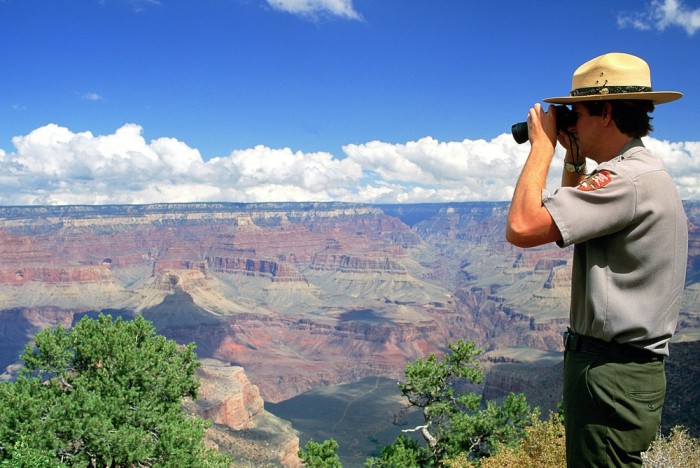"(The National Park Service's) purpose is to conserve the scenery and the natural and historic objects and the wildlife therein and to provide for the enjoyment of the same in such a manner and by such means as will leave them unimpaired for the enjoyment of future generations" -- NPS Organic Act of 1916
"Why do I have to pay an entrance fee? I pay taxes don't I?" -- Average Citizen at a Park Entrance, Every Country
| Entrance Fees Often Cause Bottlenecks into Nature Reserves, But Why Are They Necessary? Source: The Chicago Tribune |
Trouble at the Gates
We often take nature for granted. The expansive wilderness always seems like it is just outside our window. We, as individuals, do not spend much time out there but we take solace in the fact that we could head out into the great outdoors whenever we please. It can come as quite a surprise when, upon trying to do so, we find ourselves stopped at a kiosk with a friendly Park Ranger demanding ten dollars for the right to go romping through the forest.
People often respond indignantly to such a price. How can it cost anything to visit a park? Is it not the purpose of taxes to provide funding for government programs such as this?
The truth is that environmental conservation, preservation, and protection are globally underfunded. For example, in 1994 it was estimated that all of the world's existing protected areas needed to be allocated $17 billion in order to be maintained in their present state. Only $4.1 billion ended up being budgeted worldwide, compared to $245 billion that was budgeted for agricultural subsidies in the same year. Right now, the US National Parks have a maintenance backlog with a projected cost of $11.3 billion. This is why parks are understaffed and fees are required for entry.
| A Graph of Funding for the National Forest Service's Recreation, Heritage, and Wilderness Programs Since 2001 Source: The National Wildlife Federation |
This gets at an innate paradox within the conservation movement. Conservation looks to sustain natural diversity to its highest potential, yet must also be financially sustainable and socially accessible to do so. This is a hard balance to uphold; actions that are best for the health of the ecosystem often go against economic trends or the demands of the visiting public. Additionally, environmental projects are expensive yet the bulk of governments' budgets are allocated to more popular issues like defense or infrastructure. But conservationists do not have to solely rely on public funding.
It has been proposed that conservationists should partner with the tourism industry in order to make protected areas more accessible and more profitable. Ecotourism and wildlife experiences have become highly popular as a growing urban population looks to find repose in beautiful sceneries and biodiverse areas. Tourism is a $1.5 trillion industry globally, with environmentally themed programs making up 20-40% of these profits. If conservation organizations could tap into these revenues, then their funding problems could be a thing of the past.
